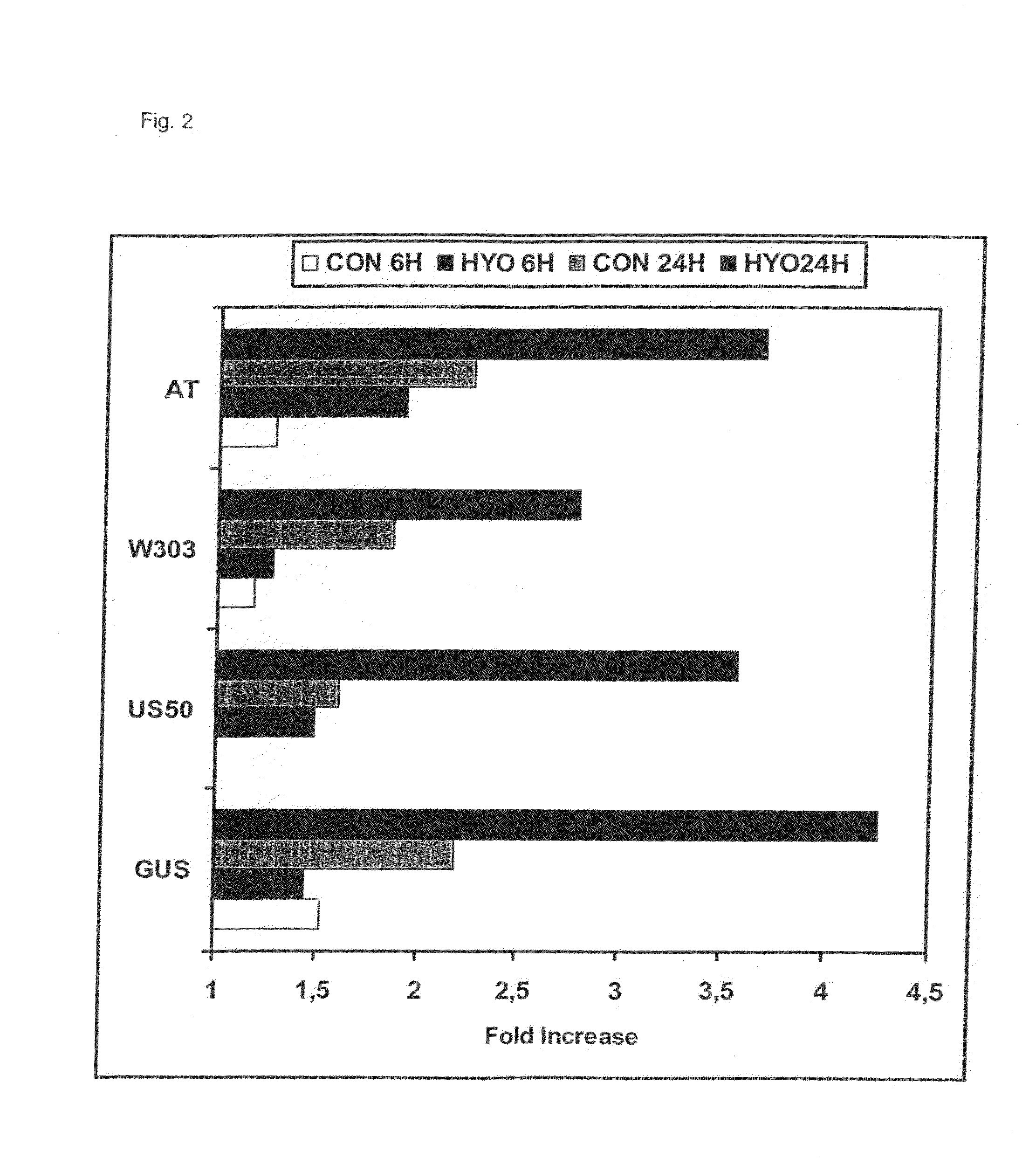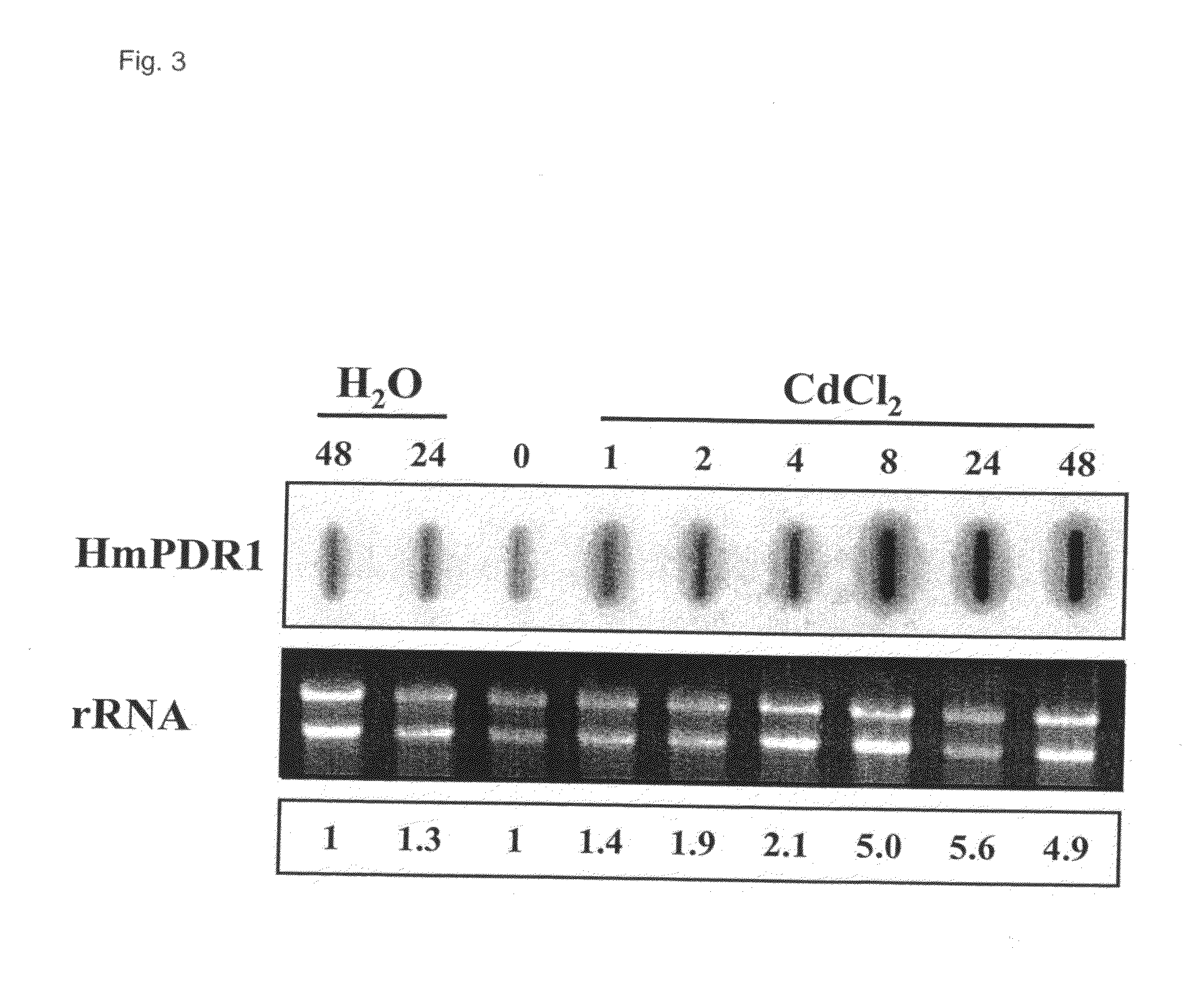Use of genes encoding membrane transporter pumps to stimulate the production of secondary metabolites in biological cells
a technology of membrane transporter and transporter gene, applied in the field of biotechnology, can solve the problems of complex production of secondary metabolites through chemical synthesis, long and complicated biosynthetic pathways of secondary metabolites, and the cost of valuable phytochemicals, and achieve the effect of enhancing the production or secretion of secondary metabolites and enhancing the production of secondary metabolites
- Summary
- Abstract
- Description
- Claims
- Application Information
AI Technical Summary
Benefits of technology
Problems solved by technology
Method used
Image
Examples
example 1
Identification of Yeast Multidrug Resistance Transporters Specific for Tropane (Tas) and Nicotine-Type Alkaloids (NAs)
[0053]In the yeast Saccharomyces cerevisiae, a complex pleiotropic drug resistance (PDR) network of genes involved in multidrug resistance is composed of the transcriptional regulators Pdr1p and Pdr3p, which activate expression of the ATP-binding cassette (ABC) transporter-encoding genes PDR5, SNQ2, YOR1, as well as other not yet identified genes. To assess yeast sensitivity towards tropane alkaloids (Tas) and nicotine alkaloids (Nas) and identify yeast ABC transporters with specificity for TAs and NAs, we have screened isogenic yeast strains deleted of the ABC transporters YOR1, SNQ2, PDR5, PDR10, PDR11 or YCF1 for tolerance to the toxic compounds hyoscyamine, scopolamine and nicotine. The isogenic yeast strains derived from the US50-18C genotype were constructed and described in Decottignies et al. (J. Biol. Chem. (1998) 273, 12612). The yeast strains derived from ...
example 2
Assessment of Toxicity of Tas and Nas to Tobacco BY-2 Suspension Cultured Cells
[0055]Suspension cultured tobacco cells, Nicotiana tabacum L. cv Bright Yellow 2 were grown in the dark at 26° C. on a rotary shaker (130 rpm) in MSST, a modified Murashige-Skoog basal medium supplemented with 1.5 mM KH2PO4, 3 μM thiamine, 0.55 mM inositol, 87 mM sucrose and 1 μM 2,4D. Cells are subcultured every 7 days by transferring 0.5 ml into 50 ml of fresh medium in 250-ml flasks.
[0056]Toxicity of TAs and NAs to tobacco BY-2 cells was assessed in two ways. In the first method growth performance on MSST medium containing different concentrations of TAs or NAs was controlled. To this end a fresh BY-2 cell culture was started and after 3 days culture volumes of about 300 μl were dropped on MSST plates containing 0.65% Bacto Agar and the toxic alkaloids. Filter-sterilized water solutions of hyoscyamine and nicotine were added after autoclaving. Growth was evaluated after 15 days incubation at 26° C. Wil...
example 3
Expression of PDR5 in Tobacco BY-2 Suspension Cultured Cells
[0057]3.1 Cloning of PDR5
[0058]The PDR5 gene was cloned by the PCR method with the PfuI polymerase. To this end oligonucleotides were designed with 5′-terminal attB sequences that amplify the entire open reading frame of the PDR5 gene (4536 nt) as a PCR product that is an efficient substrate for recombination with the Gateway™ system (Invitrogen). Gateway technology provides an alternative rapid method for cloning a sequence into a multiple expression system. The advantage of the Gateway cloning is that fragments present as Entry clones can be subcloned into different Destination vectors in a short time. This technology was used to construct a set of versatile vectors for Agrobacterium-based plant transformation. Our intention was to develop vectors for wide range plant gene analysis. The Gateway-compatible binary vector pPZP200 is the backbone of our constructs (Hajdukiewicz et al. Plant Molecular Biology 25, 989-994, 1994...
PUM
| Property | Measurement | Unit |
|---|---|---|
| Fraction | aaaaa | aaaaa |
| Fraction | aaaaa | aaaaa |
| Fraction | aaaaa | aaaaa |
Abstract
Description
Claims
Application Information
 Login to View More
Login to View More - R&D
- Intellectual Property
- Life Sciences
- Materials
- Tech Scout
- Unparalleled Data Quality
- Higher Quality Content
- 60% Fewer Hallucinations
Browse by: Latest US Patents, China's latest patents, Technical Efficacy Thesaurus, Application Domain, Technology Topic, Popular Technical Reports.
© 2025 PatSnap. All rights reserved.Legal|Privacy policy|Modern Slavery Act Transparency Statement|Sitemap|About US| Contact US: help@patsnap.com



